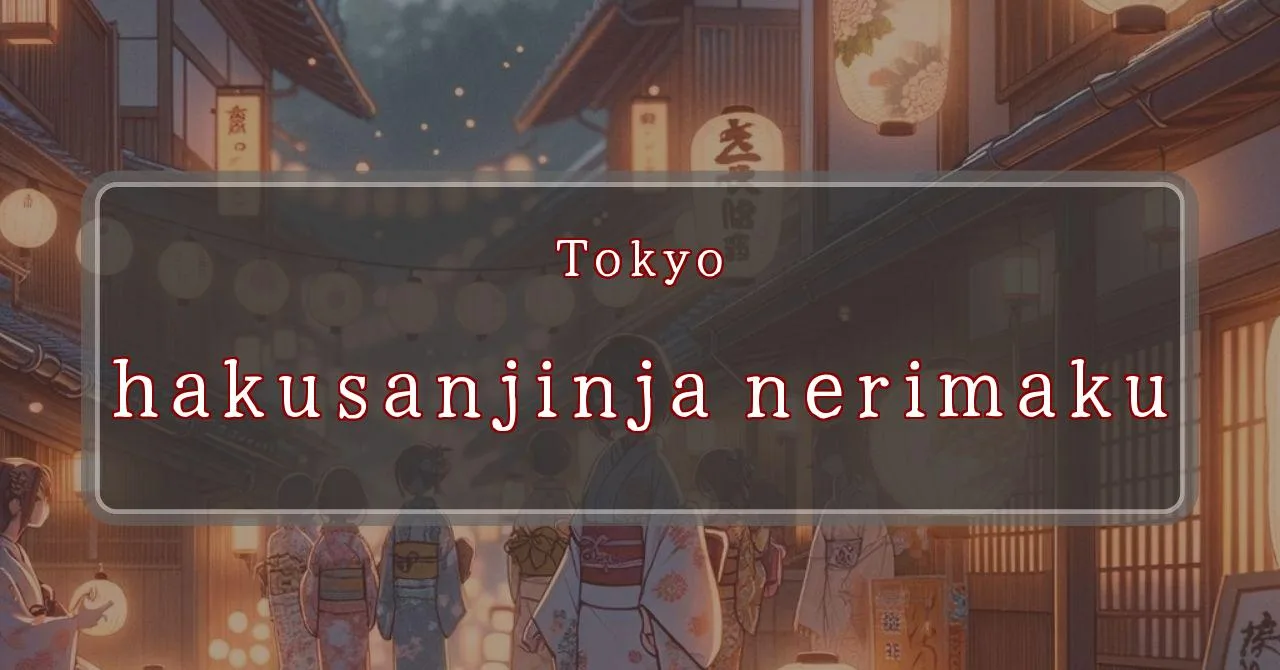練馬’s autumn festival, boasting a 1000-year-old zelkova tree
Basic Information
Here’s an overview of the 2024 Shirayama Shrine Nerima festival.
- Address: 4-1-2 Nerima, Nerima-ku, Tokyo 176-0001
- Phone Number: 03-3991-2888
- Access: 5-minute walk from Toshimaen Station on the Seibu Toshima Line or Toei Oedo Line; 7-minute walk from Nerima Station on the Seibu Ikebukuro Line, Seibu Yurakucho Line, Seibu Toshima Line, or Toei Oedo Line
- Festival Days: 2nd Sunday of October
Main Events and Attractions of the Festival
The Nerima Shirayama Shrine Festival is a lively and colorful event that attracts many visitors each year. Here are some of the main events and attractions of the festival:
Mikoshi Procession
Overview: The highlight of the festival is the mikoshi procession, where a portable shrine is carried through the streets of Nerima by groups of people.
- Content: A portable shrine is carried through the streets of Nerima.
- Features: The mikoshi is decorated with colorful tapestries and carried by groups of people.
Lion Dance
Overview: A traditional lion dance is performed at the shrine during the festival.
- Content: A lion dance is performed at the shrine.
- Features: The lion dance is performed by skilled dancers and is believed to bring good luck.
Taiko Drumming
Overview: Taiko drumming is a popular form of Japanese drumming that is often performed at festivals.
- Content: Taiko drumming is performed at the shrine.
- Features: The taiko drumming is performed by skilled drummers and is sure to get your heart racing.
Blessings and Deities
The Nerima Shirayama Shrine is dedicated to the deity Izanami-no-Mikoto, who is associated with the creation of Japan and is revered as a goddess of life and fertility.
- Benefits: The shrine is believed to offer blessings for a bountiful harvest, good health, and prosperity.
- Deities: The main deity of the shrine is Izanami-no-Mikoto.
Origin and History
The Nerima Shirayama Shrine has a long and storied history, dating back to the平安時代 (Heian period).
- Establishment: The shrine is believed to have been founded in the平安時代 (Heian period).
- History: The shrine has been rebuilt and renovated several times over the centuries, most recently in the明治時代 (Meiji period).
Tips and Notes for Visitors
Here are some tips and notes for visitors to the Nerima Shirayama Shrine:
- Festival Date: The festival is held annually on the second Sunday of October.
- Access: The shrine is a 5-minute walk from Toshimaen Station on the Seibu Toshima Line or Toei Oedo Line, or a 7-minute walk from Nerima Station on the Seibu Ikebukuro Line, Seibu Yurakucho Line, Seibu Toshima Line, or Toei Oedo Line.
- Parking: There is free parking available at the shrine.
Parking Information
There is free parking available at the Nerima Shirayama Shrine.
- Capacity: Approximately 20 spaces
- Location: Adjacent to the shrine
Popular Stalls and Food Carts in Recent Years
| Type of Stall | Description |
|---|---|
| Takoyaki | A staple at Japanese festivals. Characterized by a crispy outside and a creamy inside. |
| Jaga Butter | A simple yet popular snack of hot potatoes lavishly topped with melted butter. |
| Baby Castella | Small castella cakes, sweet and fluffy treats enjoyed by children and adults alike. |
| Grilled Ayu with Salt | Fresh ayu fish grilled whole with salt, a savory taste of Japanese summer. |
| Shaapin | A unique gourmet item influenced by foreign cuisine, with a chewy skin wrapping the filling. |
| Okonomiyaki | A Japanese grilled dish where you often choose your own ingredients for a personalized flavor. |
| Cotton Candy | A fluffy, sweet snack that’s extremely popular with children. |
| Chocolate Banana | A banana coated in chocolate, a fun and visually appealing dessert. |
| Kushiyaki | Various types of ingredients skewered and grilled, an easy-to-enjoy snack. |
| Yakisoba | Fried noodles mixed with a special sauce, a fast food favorite in Japan. |



